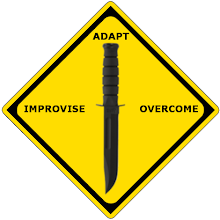When you become stranded or lost in the middle of the woods it is an encouraging thought that simply by looking around you can easily discover a vast multitude of foods. As a survivalist it is our responsibility to ourselves and to our families to be able to recognize and find these value food sources should we need them.
Granted most survival situations are not serious and are of short duration however it only takes one time to not have the proper knowledge. During these short duration emergencies the immediate demand remains shelter and potable water realizing that you have the knowledge to obtain food in the wild acts as a great comfort when lost even for a short period of time so be certain that you are up on these skills.
When in the wilderness you will encounter several basic different types of survival foods. Determining which type to use will depend upon where you are at as well as what equipment you have to work with.
Wild Berries represents the first group of foods you may encounter. This is also the simplest and easiest of the foods to obtain. Given the proper season you may possibly encounter several different berry selections to choose from. A simple rule of thumb to follow is if the berry looks or it tastes like a strawberry, blueberry or a raspberry then it must be one. For safety reasons most of the other berries that you may encounter you should be able to identify by looking at it. These berries would include June berries, wild currants, bearberries, bunchberries, wintergreen berries, wild cherries, blackberries, thimbleberries, rose hips and cranberries.
The second group of survival foods is those which originate from the water such as fish. It is safe to eat all of the freshwater fish found in North American waters. It is possible with little practice to catch a fish with your bare hands although in most cases this will not happen. Wait patiently as they swim by you and very quickly pin the fish to the bottom of the water with your hands. You may also chase the fish into a shallow pool of water and trap them there. If you happen to have an emergency fishing kit with you it is possible to use worms or grasshoppers to catch your fish.
Fish can be very evasive so in many cases it is easier to try and catch other survival foods within the stream or the lakes such as clams or mollusks which can easily be picked up. These are also easily prepared by cooking over an open fire. Crayfish can often be found crawling upon the bottom of the streams and the lakes or hiding under logs or rocks in the water. Keep in mind that the only usable parts of these craw fish are the tails.
Next we have the Insects And miscellaneous Bugs as a survival food. Be reminded that not all insects are can safely be eaten. If you do not know for sure which ones they are stay with wood grubs and grasshoppers. Grasshoppers can easily be caught by hand in any grassy field while the grubs can be found by opening up a rotting log. The survivalist on TV may eat them raw however you should cook and remove all legs and wings before eating them.
Birds represent another source of survival food in the woods. It is not likely that you will be able to kill or capture most bird unless you have a gun. The birds that nest upon the ground may possibly be obtained with the use of a well aimed rock while they are nesting. The eggs from the ground nesting birds can be a good survival food.
Once again although larger animals will be prevalent it isn’t likely that you are going to bag one without the proper weapon. It is extremely difficult to kill any of the mammals without some sort of gun. Don’t for one moment think that you could use a spear or other primitive weapon to obtain an animal for dinner. It only happens in Rambo films. I personally would not even recommend that you waste your time and energy trying.
The important point here is that you become proficient at finding food when in a survival situation.s


 Subscribe
Subscribe